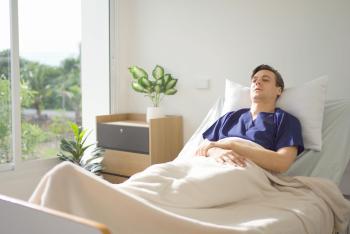This article explores how service dogs, emotional support animals and therapy dogs enhance the well...
Read More
In a given year, as much as six percent of the U.S. population experiences Seasonal Affective Disorder (SAD), which is a type of Major Depressive Disorder that comes and goes with the seasons. For many with SAD, there is an increase in depressive symptoms beginning in the fall and lasting until the winter, however, some may experience an increase in symptoms during the spring to summer seasonal transition.

Symptoms of a depressive episode include: loss of interest in activities, decreased energy, sleep disturbance, poor concentration, changes in appetite, and feeling down or depressed nearly every day over a two-week period.
The cause of SAD remains unknown, but research has shown that the reduction in sunlight during the fall and winter can lower levels of serotonin (chemical that regulates mood) and melatonin (chemical that regulates mood and sleep). SAD is four times more common in women than in men and occurs more in younger adults than in older adults.
If you have a family history of other types of depression or live far away from the equator, you are at an increased risk. People who live in countries with year-round sunshine do not experience SAD at the rates of those with intense changes in seasons.
If you’ve been diagnosed with SAD, your doctor may recommend several treatment options. Some of these treatment options may include: light, therapy, talk therapy, medication, natural supplements and potential changes to your diet and exercise routine. Light therapy is essentially a way of replacing the sunshine you’re missing through exposure to bright, artificial light each day. Light boxes filter out ultraviolet rays and create cool-white fluorescent light that is about 20 times brighter than your typical indoor lighting. Treatment may be as little as 20 minutes to one hour of exposure to the light with the goal of triggering the chemicals in your brain that help regulate your mood.
Overall, it is helpful for individuals who are diagnosed to try and get outside in the natural light as much as possible, even it’s a cloudy day. Achieving this in the winter months may mean waking up extra early to catch the morning sun.
It’s normal to have some days during the cold-weather months when you’re feeling a bit cooped up or down from spending a lot of time indoors. If you feel down for days at a time or are experiencing feelings of hopelessness, talk to your doctor about diagnosis and treatment options before symptoms get worse.
If you are interested in learning more about behavioral health services at Inspira, call 1-800-INSPIRA.

This article explores how service dogs, emotional support animals and therapy dogs enhance the well...
Read More
Voluntary stays offer a proactive, empowered approach to mental health care by allowing individuals...
Read More
Social media poses risks to adolescent mental health, sleep and self‑esteem. By combining clear...
Read More